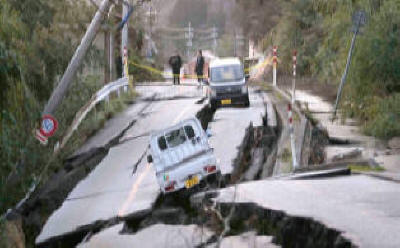Earthquakes
An earthquake is a sudden movement of the Earth, caused by the abrupt release of strain that has accumulated over a long time. For hundreds of millions of years, the forces of plate tectonics have shaped the Earth as the huge plates that form the Earth’s surface slowly move over, under, and past each other. Sometimes the movement is gradual. At other times, the plates are locked together, unable to release the accumulating energy. When the accumulated energy grows strong enough, the plates break free. If an earthquake occurs in a populated area, it may cause many deaths and injuries and extensive property damage.
An earthquake occurs when stresses within the Earth's crust (caused, for example, by motion between the great tectonic plates that make up the Earth's outermost shell) increase enough to overcome the frictional resistance that locks crustal blocks on the opposite sides of a fault together. During the period between earthquakes, the ground near the fault deforms as the stress builds up; the amount of deformation depends on the elasticity ("springiness") of the crustal material. The elastic-strain energy stored in the crust during deformation is released primarily by sudden fault displacement and the resulting seismic waves. The released energy not only causes the brief, sometimes violent shaking largely responsible for structural damage and loss of life, but also leads to longer term, regional changes in the shape of the land surface.
